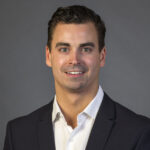February 16, 2024


With Matthew Studley, Executive Vice President, Complex Risk Unit, Hub International
HUB International is the biggest brokerage in Canada. From that unique vantage point they’ve published The HUB 2024 Outlook—a report that brings together insights on the current business landscape to help organizations navigate risks and build a resilient future.
The report’s based on an in-depth survey of 900 business leaders across 11 industry sectors in the U.S. and Canada featuring a range of organizations based on revenue and employee size. Insights are organized into three categories—profitability, vitality and resiliency. Conclusions are broadly applicable to businesses of many kinds. For example, the Vitality section encourages employers to strengthen their business by providing better resources and support to employees.
Key Facts & Figures | Vitality
- Improving an existing employee’s skills costs on average $1,300 compared to an average cost of $4,700 to hire a new employee
- Over half of all global employees need to upskill or reskill by 2025 to keep up with the evolution of jobs
- 68% of respondents recognize the importance of upskilling but only 38% actively invest
- Employee burnout costs $332B globally in terms of turnover and diminished productivity
- Employees satisfied with their benefits are twice as likely to be content with their jobs
- Employers aiming to increase engagement and productivity should recognize that employee groups have different needs, and therefore need personalized benefits
Matthew highlighted the ideas making the biggest impact and those that’ll resonate most for brokers and their clients.
What are the takeaways of greatest relevance to brokers?
Clients are dealing with a larger volume and greater variety of risks in a more complex and interconnected environment than ever before. With business priorities ever changing, many are able to identify the key risk issues but whether that translates to actionable risk management strategies is more difficult to quantify. As insurance advisors we have the opportunity to highlight risks and connect businesses with processes and products to manage their impact—this creates a more resilient business community, which is beneficial to their stakeholders and society at large.
What insights would be most beneficial for their clients to know?
Businesses need to build better resiliency and align their strategic priorities with their risk management objectives and framework. Our survey revealed a gap between what business leaders perceive and their actual level of preparedness. It also revealed a gap in how, and if, they’re using insurance as a strategic tool to limit volatility within their business. Financial profitability is only one component for modern businesses to leverage appropriate risk management—wellbeing, financial wellness and vitality of your workforce are underutilized opportunities for efficiency and increasing operational resiliency.
Were there any insights that surprised you?
Only 27% of respondents have ever leveraged their insurance as a form of contingent capital to manage corporate profit volatility risk—surprisingly low. 43% of leaders admitted misalignment between their firm’s C-suite strategy and the strategies of their risk, insurance and HR teams which seems very high.
Have any predictions come to light this year?
The lack of stability within the economy and geopolitics seems to be an ongoing trend with no signs of abating. Disruption to the supply chain, whether it’s related to terrorists, Global shipping routes, climate change or cyber security threats, isn’t improving.
Is HUB shifting strategies based on what you learned from this report?
It’s less of a strategic change for us than reinforcement confirming our investments in data and actuarial analytics, innovative specialty resources and an iterative process providing bespoke risk management solutions for our clientele. It also highlights the need for alternative narratives with clients which are far more forward-looking rather than relying on historical patterns and losses.
